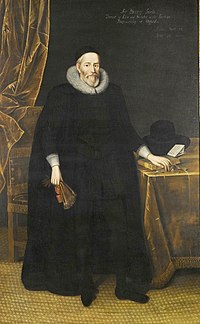
Photo from wikipedia
OBJECTIVES The aim of this study was to evaluate the accuracy of complete-arch digital impressions for fabrication of an implant-supported prosthesis in the edentulous maxilla using an auxiliary geometry part.… Click to show full abstract
OBJECTIVES The aim of this study was to evaluate the accuracy of complete-arch digital impressions for fabrication of an implant-supported prosthesis in the edentulous maxilla using an auxiliary geometry part. MATERIAL AND METHODS A replica of the upper jaw of an edentulous patient with four scannable impression copings was fabricated in stainless steel. This model was scanned with an industrial non-contact 3D structured blue light 3D scanner and the measurements of three reference distances were established as reference values. Subsequently, the model was scanned in two different scenarios (with or without an auxiliary geometry part put in place and fixed to the model) using three intraoral scanners. Measurements were taken with 3D inspection software and a digital impression of the complete arch was built with mesh-processing software by combining 2 STL files obtained with an intraoral scanner. RESULTS All measurements with the auxiliary geometry part gave significantly more accurate results (p<0.05). Trueness improved in the three reference distances, reaching values of 8 ±6µm at D12 reference distance, 20 ±11µm at D13 and 35 ±22µm at D14. Precision also improved significantly with the use of the auxiliary geometry part placed on the model (p<0.05). The best precision results at reference distances D13 and D14 were obtained with the True Definition scanner. CONCLUSIONS The proposed methodology significantly improves the accuracy of complete-arch digital impressions in edentulous patients obtained in vitro, regardless of which scanner is used.
Journal Title: Clinical oral implants research
Year Published: 2019
Link to full text (if available)
Share on Social Media: Sign Up to like & get
recommendations!